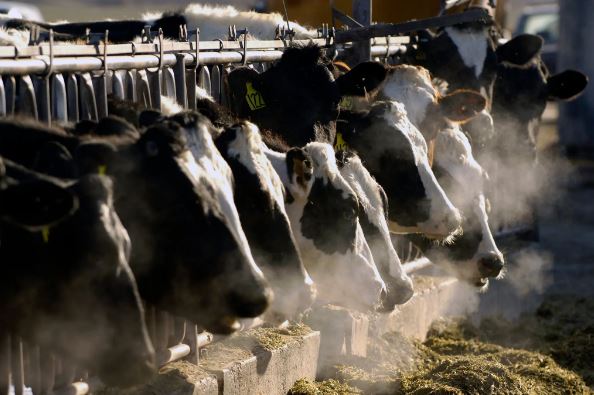Federal regulators announced today that traces of inactive bird flu virus have been detected in samples of pasteurized milk from various parts of the United States. However, they reassured the public that these remnants do not pose any threat to consumers.
The Food and Drug Administration (FDA) stated that despite the presence of viral fragments, the commercial milk supply remains safe for consumption. This announcement follows the recent detection of the H5N1 bird flu virus in over 30 dairy herds across eight states, with one reported case of infection in a farmworker.
Critics have pointed out delays in sharing crucial data and insufficient testing of cattle for the infection by the Agriculture Department. Nevertheless, experts like virologist David O’Connor from the University of Wisconsin-Madison emphasize that the risk of transmission through milk containing viral fragments is minimal, as the genetic material cannot replicate.
While the exact number of milk samples testing positive for viral remnants and their origins have not been disclosed, preliminary data suggests around one-third of samples are affected. This raises concerns about the potential widespread nature of the outbreak among dairy cows.
The FDA is currently conducting further investigations, including experiments to determine if active virus is present in the milk samples. Despite these ongoing tests, federal officials maintain confidence in the safety of the commercial milk supply, citing pasteurization as an effective measure to eliminate pathogens.
Consumer awareness and clear communication are deemed essential by experts such as Brian Ronholm from Consumer Reports. They stress the importance of educating the public about the findings to avoid unnecessary panic.
Additionally, historical experiences with pasteurization offer reassurance. Dr. Michael Osterholm, an infectious disease expert, highlights past successful efforts to neutralize pathogens in milk, suggesting that H5N1 is unlikely to pose significant risks.
Furthermore, experts like Dr. Nahid Bhadelia from Boston University emphasize the body’s ability to break down ingested milk and handle remnants of viral genetic material. While infected cows may continue to carry viral remnants, the duration for them to become virus-free remains uncertain.
Overall, while the detection of viral fragments in milk raises concerns, current evidence suggests minimal risk to consumers, and ongoing investigations aim to ensure the safety of the milk supply.

